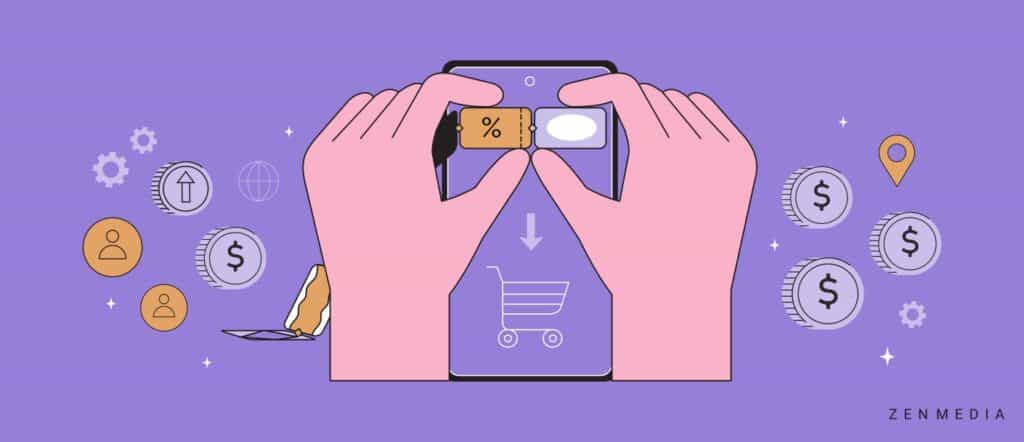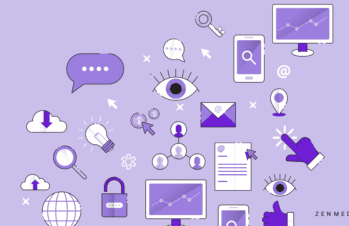For decades, marketing teams focused on generating leads and creating awareness, while sales teams shouldered the responsibility of closing deals. But that mindset will no longer cut it in today’s buyer-centric landscape.
While sales-enabled marketing tactics like smarketing focus on aligning sales and marketing goals, buyer enablement places the buyer at the heart of the sales process.
Think about it: when we implement sales-enabled strategies, we provide our sales teams with the tools they need to close deals.
But how good are those strategies going to be if we don’t build them on buyer expectations?
Buyer enablement serves as the foundation, emphasizing the importance of empowering buyers. Sales enablement builds upon buyer enablement, equipping the sales team with the necessary resources to effectively engage with buyers.
Understanding Buyer Enablement
At its core, buyer enablement is about placing the power in the hands of buyers and empowering them throughout the sales process.
Potential buyers, with extensive information at their fingertips, have unique needs, challenges, and preferences. To capture their attention and win their trust, organizations must adopt a buyer-centric approach. This is where buyer enablement comes into play.
Buyer enablement is not merely a buzzword or passing trend; it’s a fundamental shift in mindset that drives business success. It recognizes that buyers are no longer passive recipients of information, but active participants who seek value, personalized experiences, and solutions that address their specific pain points.
By embracing buyer enablement, organizations acknowledge that the old tactics of pushing products and services onto customers are no longer effective. Instead, they focus on providing buyers with the resources, knowledge, and support they need to make informed decisions.
To effectively implement buyer enablement, organizations must understand the buyer journey. It is crucial to map out the different stages a buyer goes through, from initial awareness to consideration, and, finally, the purchasing decision. By gaining insights into each stage, businesses can tailor their strategies and interventions to meet the buyer’s specific needs at every step.
The key to successful buyer enablement lies in personalization and customization. By leveraging technology and data-driven insights, organizations can create tailored experiences that resonate with buyers on an individual level. This includes delivering targeted content, providing relevant information, and offering personalized solutions that address their pain points.
Buyer enablement also involves providing buyers with self-service tools, interactive platforms, and educational resources. B2B brands can be certain that a majority of their potential buyers are researching their companies for weeks, months, and sometimes even years before the brand ever knows they exist. Actually, only 29% of buyers want to talk to a salesperson to learn more about a product.
Buyer-enabled tools allow buyers to explore, compare, and evaluate at their own pace, equipping them to make confident decisions. Not only does this self-empowerment enhance the buying experience, it also establishes a foundation for long-term customer loyalty.
The Role of Sales Enablement
While buyer enablement sets the foundation by focusing on the needs and expectations of buyers, sales enablement takes it a step further by equipping sales teams with the necessary tools and resources to succeed in the buyer-centric landscape.
Sales enablement is not just about arming sales professionals with a generic set of sales techniques; it’s about providing them with the knowledge, skills, and technologies that enhance their effectiveness and efficiency. This strategic approach recognizes that sales teams are the driving force behind revenue generation and play a pivotal role in guiding buyers through their purchasing journey.
Sales professionals need to be well-versed in not only the products and services they offer, but also in understanding the buyer’s challenges, industry trends, and competitive landscape. This enables them to engage in meaningful conversations with buyers, positioning themselves as trusted advisors rather than mere sellers.
To accomplish that effectively, sales teams need access to tech solutions and a repository of resources that cater to various stages of the B2B buyer journey. From customer relationship management (CRM) systems to sales automation tools, organizations must invest in technologies that streamline sales processes, enable effective communication, and provide actionable insights. These tools empower sales teams to make data-driven decisions, manage leads efficiently, and track the progress of sales opportunities.
Ultimately, sales enablement works hand in hand with buyer enablement. The knowledge, tools, and resources provided through sales enablement strategies align with the buyer’s journey and enable sales teams to effectively engage with buyers at each stage. By equipping sales professionals with the necessary skills and technologies, organizations can empower them to build meaningful connections, address buyer needs, and ultimately close deals.
Bridging the Gap: Buyer Enablement in Action
The buyer journey serves as a roadmap for implementing buyer enablement strategies. Organizations must map out the different stages a buyer goes through, from initial awareness to consideration and finally, the purchasing decision. At each stage, tailored interventions can be implemented to guide the buyer, address their unique pain points, and provide the necessary information to move them closer to a buying decision.
Content must be educational, informative, and compelling. Whether it’s blog articles, whitepapers, or interactive webinars, the B2B content should provide value to the buyer, positioning the brand as a trusted source of expertise and insights.
And the messaging in that content must be personalized, demonstrating an understanding of the buyer’s specific pain points and offering tailored solutions. Personalization builds trust, fosters a deeper connection, and increases the likelihood of conversion.
Data-driven insights can also play a crucial role in buyer enablement, aligning sales and marketing. By leveraging analytics and tracking tools, organizations can gather valuable information about buyer behaviors, preferences, and engagement patterns. These insights enable businesses to refine their strategies, optimize their approach, and make informed decisions that drive success in engaging buyers.
In bridging the gap between sales and B2B marketing by aligning them with buyer-enabled strategies, sales enablement becomes a sort of checks and balances between the two departments. If the sales team is enabled with the best resources informed by buyer-centric interest, buyer-enabled strategies come to fruition, ensuring a synchronized and effective approach to engaging with buyers.
When sales enablement operates within a buyer-enabled framework, it ensures that the sales team is equipped with the right knowledge, training, and technology to effectively engage with buyers. It enables the sales team to speak the buyer’s language, address their pain points, and provide solutions that align with their specific needs.
It also ensures that the organization remains customer-focused and responsive to the ever-evolving needs of buyers. By continuously evaluating buyer feedback, market trends, and competitive insights, sales enablement helps steer the organization in the right direction, making necessary adjustments and optimizations to stay aligned with buyer-enabled strategies.
Ready to invigorate your B2B with buyer-enabled strategies? Reach out today.





